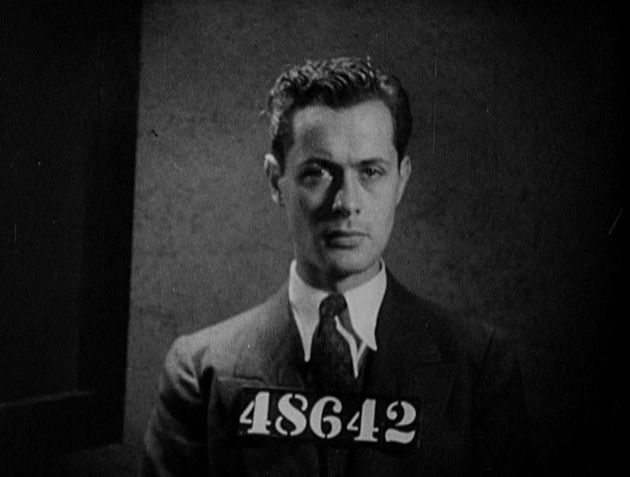Playboy racketeer Jack "Lucky" Wilson (Robert Montgomery) is out on the town, breaking hearts and taking names. His latest racket is coercing two New York City night club owners, Shuman (Henry Armetta) and Jake (Herman Bing), into a partnership with his laundry syndicate. But the cops, including detectives MacCarthy (Edward Arnold) and Britt (Edward Brophy), are hot on his trail. After a confrontation with the police Wilson is shot but manages to escape and drive off. He heads upstate but passes out from his injury. Wilson is rescued by a local town clerk and farmer, Henry Miller (Whitford Kane), who brings him to his home to recover. Wilson tells Miller that he escaped a gangster, and hides the fact that he's one himself, and insists on having his doctor check up on him to not raise suspicion. While Wilson recuperates from his gunshot wound, he meets Miller's daughter Pauline (Maureen O'Sullivan), who is his polar opposite. She's a simple country gal and he's fast talking city guy. The Miller family is kind, generous and patient. Ma Miller (Elizabeth Patterson) fusses over Wilson and their young son William (don't call him Willie!) (Mickey Rooney), makes every effort to befriend Wilson. He learns to feed chickens, milk cows, chop wood and bring in the hay and enjoying the country life. Wilson stays longer than he should, falling in love with the beautiful Pauline. Will Wilson fess up or will he go back to his life of crime?
Hide-Out (1934) is based on an original story by Mauri Grashin and adapted for the screen by husband and wife writing team Albert Hackett and Frances Goodrich. Grashin received an Academy Award nomination for his story which was remade in 1941 as I'll Wait for You. The film was released August of 1934, just a month after Hollywood began to enforce the Hays Code began in earnest, officially ending the Pre-Code era of Hollywood filmmaking. I wonder if this affected the outcome of Hide-Out. What kind of story would it have been as a Pre-Code?
The film was directed by W.S. Van Dyke for MGM. He also directed The Thin Man movies, a point referenced in the marketing materials for this movie. Van Dyke, known as One-Take Woody, was MGM's go-to guy. He built a reputation on being a reliable director who would take on any production and keep it on schedule and under budget. Hide-Out was filmed, edited and released in a two month span. There was some delay however. According to the AFI, during pre-production Maureen O'Sullivan had to drop out to visit her ailing father in Ireland. Loretta Young replaced her only to have to drop out herself due to illness and was replaced with O'Sullivan.
Hide-Out is one of my favorite 1930s films. It's a sweet and charming romance. I love the concept of a city gangster out of his element in the country. Montgomery's Wilson and O'Sullivan's Pauline really develop as characters. He teaches her to be more bold. She teaches him to take pleasure in the simple things in life. Mickey Rooney is just adorable in this movie as Pauline's little brother. If you're not a fan of his on screen intensity, you might like his more subdued performance here as William/Willie.
Hide-Out (1934) is available on DVD-MOD from the Warner Archive Collection. When you use my buy link you help support this site. Thanks!
This is Hide-Out's DVD debut. I always watch this one when it's on TCM and was very excited to see it get a DVD release. George, Matt and D.W. discuss the movie on the November 13, 2018 episode of the Warner Archive Podcast.
This is Hide-Out's DVD debut. I always watch this one when it's on TCM and was very excited to see it get a DVD release. George, Matt and D.W. discuss the movie on the November 13, 2018 episode of the Warner Archive Podcast.
























